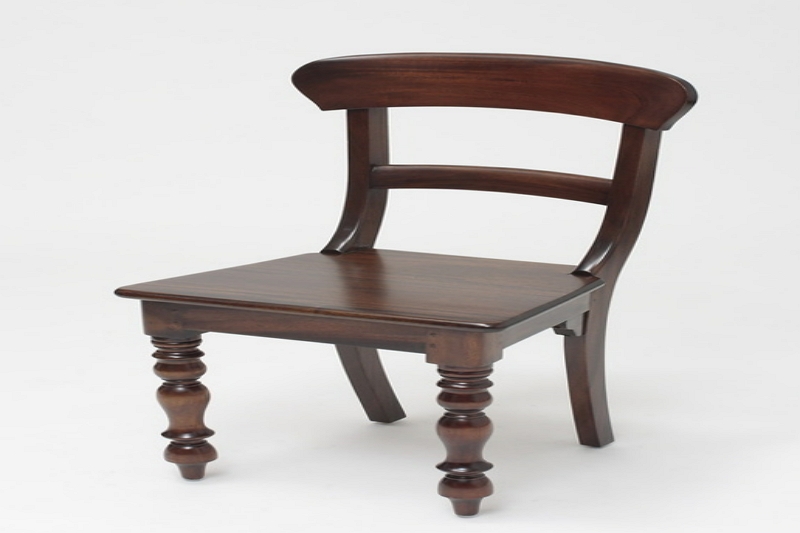Installing swivel glides on colonial chairs is a simple project that will make a big difference. This how-to guide will show you how to install them in detail, and how they can be beneficial for your chair.
Follow these instructions carefully and enjoy the result!

Steps on Installing Swivel Glides on Colonial Chairs:
Step 1. Purchase two swivel glides. One for the front of the chair’s seat, and one for underneath the back of your colonial chair
Step 2. Mark in pencil how far you want to place each glide from where it is sitting now (the centre of either side) by measuring how much space you need between them and marking with a little arrow pointing at that location on their respective sides.
Step 3. Using an electric drill, predrill holes through those points you marked before so they will be easier when installing screws later
Step 4. Drill pilot holes into both parts of the new swivels by using a wood-boring bit to create guide hole sizes large enough to hold screw threads but not too big or deep; this can help prevent the wood from splitting
Step 5. Screw the swivels onto the back of each side and then tighten all screws with a drill (You will need to use an electric screwdriver or power drill)
Step 6. Place your colonial chair back upright on its four feet for safety’s sake, admire how you just successfully installed new swivel glides.
What is Colonial Chairs?
Colonial chairs are typically rectangular in shape and made of wood with a yeoman’s bench seat. It is considered to be an authentic American furniture piece that was used for seating at colonial tables or as a tiered settee, which would have been placed against the wall adjacent to the fireplace during festive occasions.
The Colonial chair has two legs on either side of the front edge forming arms and it does not include armrests; sometimes when you find these chairs they may also come with vertical slats down each height instead of horizontal ones like our modern-day equivalent.
Features of Colonial Chairs
The back of the chair is typically cut in a slight curve to fit against your lower spine.
Typically wooden with vertical slats that have been nailed on for support, you can find these chairs without backs also if they are not going to be used for sitting any longer but instead just for decoration or storage purposes.
Advantages of Owning a Colonial Chair
The colonial chair is an authentic and original piece of furniture, one that has had a long history in America.
They are typically made to last for generations because they’re so sturdy.
Colonial chairs can also be put onto casters if desired, which allows you to easily move them around when necessary.
These chairs have been passed down through the family tree as heirlooms or handed over from generation to generation as cherished pieces of antique furniture.
Disadvantages: It’s hard not to notice how heavy these things are! You’ll need strong people on your side if you plan on moving them around more than once or twice.
How do you put Legs on a Swivel Chair?
First, make sure that you have your swivel glides. Take the chairs apart and lay them on their side so that they look like a “T”. The front of the chair should be facing up to allow enough room for installation.
Once you’ve got everything ready, take one set of glide/legs at a time and line it up against how it will eventually fit with the other pieces to ensure proper placement: start by lining up the tabletop slot (if there is one) on the seat bottom with where it’ll go when inserted into place.
Then insert either end of all four legs in their respective holes before securing each leg with screws. Be careful not to over-tighten or under-tighten the screws!
How to Vacuum Colonial Chairs
You should vacuum your furniture at least once a week. Dirt, hair and dust will accumulate overtime on the fabric of your chair’s upholstery! If you have allergies or asthma, vacuuming is even more important to keep these allergens from spreading around in your home.
To start with, remove any loose items that might get sucked into the brush roll of the vacuum cleaner before turning it on – this includes toys and other small objects as well as clothes or blankets.
Then head to an unobstructed area (like a large room) where there are no electrical outlets nearby so you won’t bump the appliance against anything while cleaning; make sure nothing fragile like glasses or vases are within reach either! Turn off all the lights to avoid any sudden flashes or changes in light that can trigger migraines, then vacuum away.
How to Prevent Damages on Colonial Chairs
If the wood is dirty, clean it with soap and water before applying a moisturizing oil or cream. When done, coat parts of the chair that are still dry to ensure protection from damages due to heat and sun exposure – like arms, legs, backrests etcetera.
